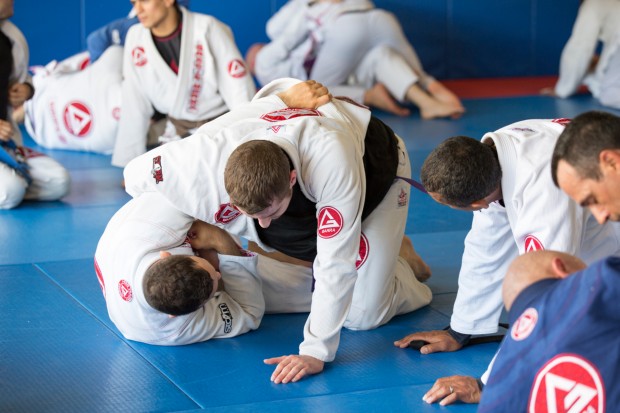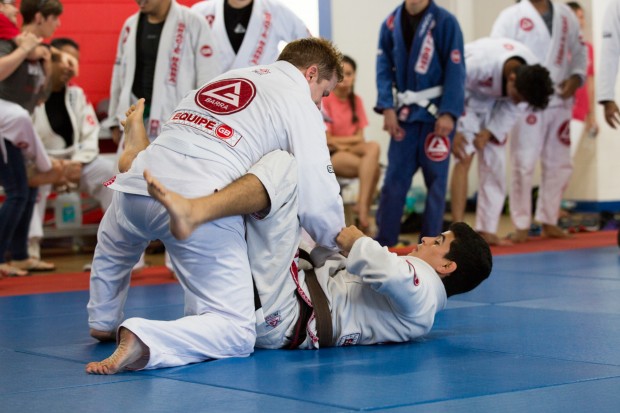Adding New Positions To Your Jiu-Jitsu
There are so many positions in bjj (especially the sports aspect training in the kimono) that students should try to see if it is a fit for their game. Many will be tried and discarded as not feeling like a good fit for your attributes or to compliment your existing style of rolling.
But some may be the “missing piece” that fills a gap in your game.
Gracie Barra : Private Lessons or Group Classes: The Best Way To Learn Bjj?
So how do we go about adding a new position to our bjj game?
Let’s say that you decided to learn the style of spider guard that Romulo Barral likes to use.
One hand in the collar and spider guard hook.
1) Study. You have to do the research to get the basic ideas and techniques that surround the position.
Ask which attacks are possible form that starting set of grips? Which sweeps will be your primary and secondary sweeps? There may be many different possible sweeps – but 1 or 2 will be your highest percentage.
Watch video (both competition footage and instructional step by step for the details).
Get an overall idea of what is possible from the position before focusing on a specific sweep or submission.
2) Drill and experiment at the academy.
It is not enough to merely watch the techniques and be ready to execute in sparring.
Open mat times are ideal for this type of learning. Enrol an interested partner to drill with you and work through the basic parts of the position.
“Which grip feels tighter? This way or this way?” types of conversations need to happen as you deconstruct the position.
You need to just perform multiple repetitions to start to ingrain those new movements into your muscles memory.
Your partner will provide valuable feedback as to what is effective and what needs to be tightened up.

3) Positional sparring
Now you need to “road test” the techniques to see where the new position falls apart as your opponent does not cooperate.
During free rolling, you may only find your self in a situation to try your new position once in the entire 5 minute round.
But with positional sparring where you START and RESET often in the position, you will have far more opportunity to work on what you are trying to develop.
Positional sparring is a GREAT tool to develop a new position.
4) Feedback and corrections
During your positional sparring, you will encounter some problems.
That is ok. You will not perfect a position in a single session!
You are gaining valuable feedback about what didn’t work and what was successful.
Now go to your instructor and demonstrate what you were trying to do and explain the problems that you experienced.
Your instructor can give you the specific details that you may have missed to correct your mistakes.
Now take it back to mats next class for more positional sparring with these new pieces of information.
* You need to have some patience and perseverance in adding the new position. It will fail many times before it actually succeeds.

on Gracie Barra : 4 Advanced Guard Sweeps
Credits: Mark Mullen
Gracie Barra Black belt based in Saigon, Vietnam
Twitter: @MarkMullenBJJ
